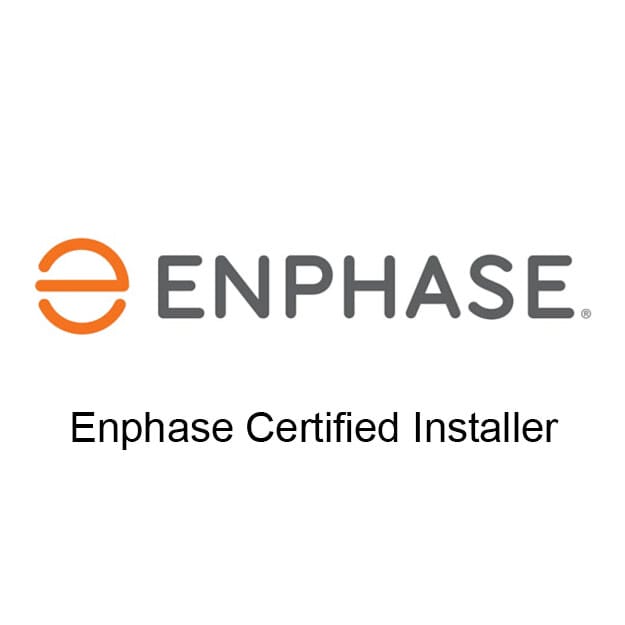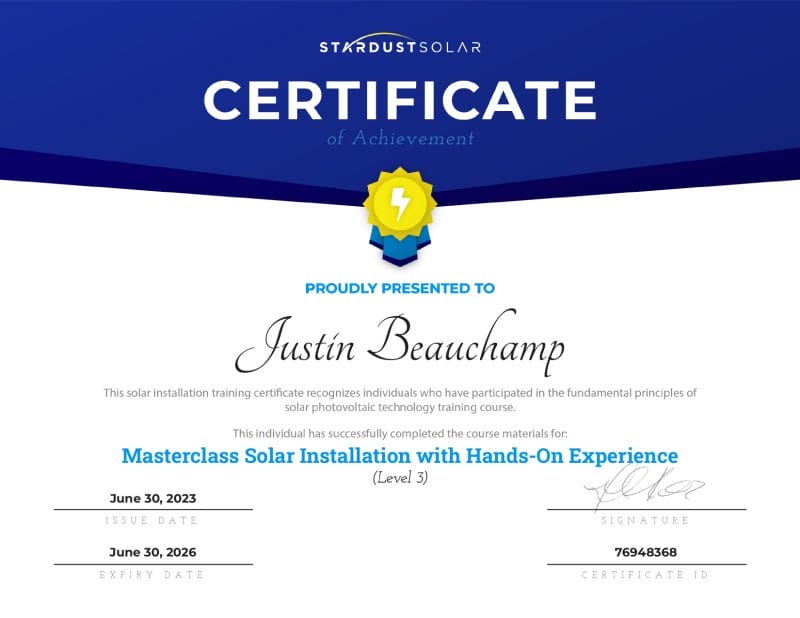Growing climate concerns, the quest for energy independence, and cost savings motivate individuals to consider renewable energy. Solar power, especially, shines as a clean and sustainable choice.
Solar energy’s rising appeal lies in its eco-friendly and renewable attributes, requiring careful consideration when choosing a solar installation method.
This blog explores two options: solar panels on flat roofs and ground-mounted systems. We’ll discuss their pros and cons, including aesthetics, energy bill savings, maintenance, and environmental impact.
Solar Panels on Flat Roofs
Solar panels on flat roofs are devices we place on flat or gently sloping rooftops. They’re designed to capture sunlight and turn it into electricity. We use special mounts to make sure they get the most sunlight.
How do they work?
- Catch the Sun: Sunlight hits the solar panel.
- Make Electricity: The panel turns this sunlight into direct current (DC) electricity. It does this by exciting electrons in its cells.
- Change the Electricity: Most gadgets and appliances need alternating current (AC) electricity. Thus, an inverter changes the DC into AC.
- Position Right: We set the panels on flat roofs at just the right angle to get the most sunlight. If you’re in the northern part of the world, the panels face south. If you’re in the south, they face north.
- Use or Store: You can either use the generated electricity immediately or return any surplus to the grid, which may lead to additional earnings.
- Keep an Eye: Make sure to monitor the panels’ performance and maintain their efficiency by regularly cleaning and checking them.
Pros
| Pros | Description |
| Seamless Integration | Solar panels can blend smoothly with your property. |
| Less Visible | Panels could be less noticeable from the ground due to the low installation angle. |
| Customizable Layout | The flat surface offers design flexibility, ensuring functionality and visual appeal. |
| Protection from Rising Costs | By making your own electricity, you’re less swayed by changing energy prices. This gives you a more predictable cost in the long term. |
Cons
| Disadvantages | Description |
| Cleaning & Debris Removal | Flat roofs can accumulate debris, which could cover solar panels and reduce their efficiency. In this scenario, periodic cleaning is essential. |
| Water Pooling | Flat roofs can sometimes have water pooling issues. If not addressed, this could lead to potential damage to both the roof and the solar panels. |
| Additional Weight | Solar panels and mounting systems add weight to the roof. Ensuring the roof can handle this additional load without compromising its structural integrity is necessary. |
| Potential Leaks | Improper installation or wear and tear can lead to roof leaks, especially around the mounting points. |
| Fixed Tilt | Some flat roof solar installations offer adjustability, but a substantial portion remains permanently tilted. This may result in less efficient sunlight capture throughout the year. |
| Space Limitation | Depending on the roof size and layout, there could be limited space for adjustments or expansions in the future. |
Ground-Mounted Solar Systems
Ground-mounted solar panels are solar panels that are installed on structures placed directly into the ground rather than being attached to a rooftop.
Often made of steel or aluminum, these structures elevate the solar panels a few feet above the ground. They provide an alternative for properties where the roof would not be suitable for solar installations due to shading, orientation, or structural issues.
How do they work?
- Installation: Installers prepare the ground by levelling it and setting up the mounting structure. This can involve concrete foundations or driven posts.
- Orientation and Tilt: Unlike rooftop systems, ground-mounted systems offer more flexibility in orientation and tilt. Panels are positioned for optimal sunlight exposure, typically facing south in the northern hemisphere and north in the southern hemisphere.
- Sunlight Capture: Similar to rooftop panels, ground-mounted panels capture sunlight. The solar cells within the panels get activated when exposed to sunlight.
- Electricity Generation: The activated cells create a flow of electrons, resulting in direct current (DC) electricity.
- Inverter Conversion: The DC electricity from the panels is then sent to an inverter, which converts it into alternating current (AC) electricity – the type used by most homes and businesses.
- Power Distribution: Once converted to AC, the electricity is either used immediately by a nearby property, stored in batteries (if the system has them), or sent back to the grid.
- Maintenance: Ground-mounted systems can be easier to access for maintenance and cleaning, ensuring they operate efficiently.
Pros and Cons
| Pros | Description |
| Space and Land Availability | Possible to install larger systems and generate more power if there’s ample land available. |
| Cost-effectiveness | Over time, due to potential larger system sizes and optimal orientation, they can offer more energy generation and thus offer better returns on investment. |
| Cons | Description |
| Land Space Requirements | Requires a significant amount of land or yard space, which will not be available for all properties or could be used for other purposes. |
| Installation Costs | Setting up the mounting structures and preparing the land could lead to higher initial costs compared to rooftop installations. |
| Maintenance Considerations | While they are easier to access, they’re also exposed to ground-level elements like dirt and debris, potentially requiring more frequent cleaning and checks. |
Energy Efficiency and Generation
The efficiency of energy generation significantly hinges on the installation methodology of solar panels. Rooftop and ground-mounted solar arrays, each with distinct orientations and prerequisites, yield varying power output efficiencies.
| Category | Rooftop Solar | Ground-Mounted Solar |
| Installation Size | Limited by roof size. | Based on available land. |
| Orientation Flexibility | Limited by roof direction. | Highly flexible. |
| Tilt Adjustability | Limited by roof slope. | Easily adjustable. |
| Energy Efficiency | Varies with roof orientation and slope. | Typically higher due to optimal setup possibilities. |
| Expansion Potential | Restricted by roof space. | Easier with available land. |
Factors Affecting Energy Production:
- Orientation: Direction affects efficiency. In the north, panels should face south and vice versa in the south.
- Shading: Obstructions reduce efficiency. Ground-mounted can avoid these better than rooftop panels.
- Tilt Angle: The tilt impacts sunlight capture. Ground-mounted systems have an edge with adjustability.
- Temperature: Panels lose efficiency with heat. Rooftop panels may get hotter due to roof heat.
- Maintenance: Clean panels work best. Ground systems would need more cleaning being closer to dust and debris.
Environmental Impact and Costs
Solar panels have a spectrum of environmental impacts, ranging from the materials used in their construction to the emissions offset throughout their operational lifespan. Moreover, the financial outlay for solar installations varies, encompassing initial investment and potential savings over time. Understand these facets a guided decision towards eco-friendly and cost-effective solar solutions.
| Category | Environmental Impact | Costs |
| Materials | Made of silicon, metals, and glass; offset by clean energy output. | Initial costs for panels, inverters, and mounts. |
| Installation | Minimal, but care is needed to avoid habitat disruption. | Varies by size, location, and complexity. |
| Energy Production | Clean, renewable energy; reduces greenhouse gases. | Reduces electricity bills; potential feed-in tariffs. |
| Maintenance | Optimal performance requires eco-friendly cleaning. | Low; includes cleaning and occasional part replacements. |
| End of Life | Panels can be recycled. | Costs for decommissioning and recycling. |
Maintenance
The distinct structures of rooftop and ground-mounted solar systems necessitate varying approaches for their upkeep. Each has its own set of maintenance requirements to ensure optimal performance over time.
Flat Roof Solar Systems:
- Debris Removal: Flat roofs can accumulate debris like leaves and dirt. Regularly cleaning the panels ensures they capture sunlight efficiently.
- Water Drainage: Ensure proper drainage on the roof to prevent water from pooling around the panels, which could cause damage.
- Structural Inspection: Over time, the weight of the panels could impact roof integrity. Regularly check the roof and mounting points for signs of stress or damage.
- Electrical Check: Inspect wiring, inverters, and other system components to ensure they function correctly.
- Panel Surface Cleaning: Dust and pollution can settle on the panel surface. Cleaning with water and, if needed, mild detergent can help maintain efficiency.
Ground-Mounted Solar Systems:
- Debris Removal: Being closer to the ground, these panels can collect more dust, fallen leaves, and grass clippings. Regular cleaning is essential.
- Vegetation Control: Ensure grass, plants, or shrubs around the installation don’t grow tall enough to shade the panels.
- Structural Inspection: Check the mounting structure for signs of wear, corrosion, or damage, especially after extreme weather events.
- Electrical Check: As with rooftop systems, regularly inspect wiring, inverters, and connections.
- Panel Surface Cleaning: Given their accessibility, it would be easier to clean ground-mounted panels, but they also will need more frequent cleaning due to their proximity to ground-level debris.

Unlock Your Property’s Solar Potential
Solar energy harnessing rapidly evolves as a sustainable and cost-effective power alternative. Whether considering rooftop or ground-mounted installations, each has unique advantages and challenges. Your choice between solar panels on flat roofs and ground-mounted installations should be influenced by your property’s characteristics and energy needs.
If you seek a tailored guide to select the ideal solution for your home, look no further than MAG Solar. We are committed to providing exemplary service, ensuring you reap the maximum benefits from your solar energy setup.
Frequently Asked Questions
Can I expand my solar system later?
Yes, you can expand your solar system later, but there are factors to consider:
For Rooftop Systems:
- Space: There must be enough roof space to accommodate more panels.
- Structural Support: Your roof should support the additional weight of more panels.
- Inverter Capacity: The existing inverter should have enough capacity to handle the increased energy production. If not, you would need a new or additional inverter.
For Ground-Mounted Systems:
- Land Availability: You will need additional land space to expand the system.
- Permitting: Ensure that local regulations and permitting processes allow for the system’s expansion.
- System Compatibility: The new panels and equipment should be compatible with your existing setup, ensuring seamless operation.






